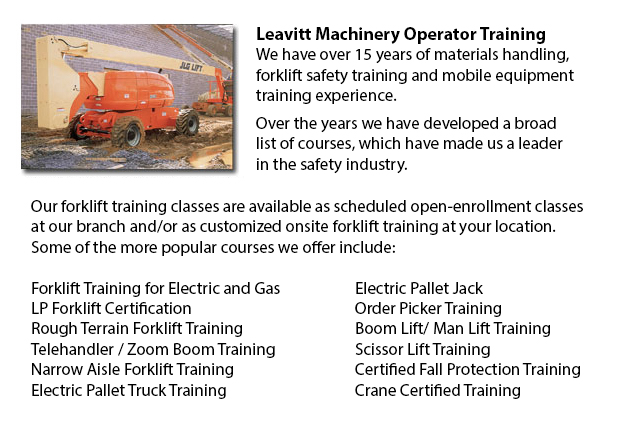
Boom Lift Safey Training Kelowna - Boom lifts fall under the type of elevated work platform or aerial lifting device. Most normally utilized in construction, industry, and warehousing; the boom lift is so versatile that it can be utilized in almost whatever setting.
The elevated work platform is utilized in order to enable access to heights which were otherwise inaccessible using other methods. There are dangers inherent when utilizing a boom lift device. Workers who operate them should be trained in the right operating methods. Avoiding accidents is paramount.
Boom Lift Training Programs include the safety factors involved in boom lift operation. The program is best for individuals who operate self-propelled boom supported elevated work platforms and self-propelled elevated work platforms. Upon successfully completing the course, People who participated would be issued a certificate by an individual who is licensed to verify the completion of a hands-on assessment.
In order to help train operators in the safe utilization of elevated work platforms, industry agencies, federal and local regulators, and lift manufacturers all play a part in establishing standards and providing the necessary information. The most essential ways in avoiding accidents associated to the utilization of elevated work platforms are the following: having on safety gear, performing site assessment and inspecting machinery.
Vital safety factors when operating Boom lifts:
Operators stay away from power line, observing the minimum safe approach distance (MSAD). Voltage could arc across the air to find an easy path to ground.
A telescopic boom must be retracted prior to lowering a work platform in order to maintain stability as the platform nears the ground.
People working from the platform of a Boom lift should tie off in order to ensure their safety. lanyard and safety harness combinations must not be connected to any anchorage other than that provided by the manufacturer, never to other poles or wires. Tying off may or may not be required in scissor lifts, which depends on particular local rules, employer guidelines or job risks.
The maximum slope would be specified by the manufacturer. Workers must avoid working on a slope, if possible. When the slope is beyond recommended conditions, the lifting device must be winched or transported over the slope. A grade can be measured simply by laying a straight board or edge of at least 3 feet on the slope. Then a carpenter's level can be laid on the straight edge and the end raised until it is level. The per-cent slope is attained by measuring the distance to the ground (likewise referred to as the rise) and dividing the rise by the length of the straight edge. Afterward multiply by one hundred.
-
Counterbalance Forklift License Kelowna
Counterbalance Forklift License Kelowna - Forklifts, when operated by completely trained workers, are a major advantage to companies. We offer a thorough training program consisting of all parts of operating a powered lift device. Counterbalance fork... More -
Forklift Certification Schools Kelowna
Forklift Certification Schools Kelowna - Within North America, forklift certification is mandatory, making forklift training programs important for both the company and their employees working as forklift operators. Forklift training focuses on healt... More -
Manlift Operator Certification Kelowna
Manlift Operator Certification Kelowna - We provide a scissor platform and aerial lift training and certification to empower the trainee with the general understanding and knowledge of the safe and efficient utilization of "Power Operated Mobile Work... More -
Crane Training Schools Kelowna
Crane Training Schools Kelowna - We have designed several programs for Mobile Crane Operation at our Crane Training Schools. These programs are recommended for the experienced operator who requires re-certification or certification, and for inexperie... More -
Heavy Equipment Operator Classes Kelowna
Heavy Equipment Operator Classes Kelowna - A heavy equipment operator is a person who has received the proper training to operate a particular type or piece of machine. There are a lot of ways for the operator to undergo training and certification in... More -
Telehandler, Rotational Telehandler, Zoom Boom Training in Kelowna
Telehandlers or also known as Telescopic handlers are really popular piece of heavy construction equipment normally utilized in agriculture and construction trades. These equipments have extreme reaching capability and could get to places where a tra... More -
Zoom Boom Training Kelowna
Zoom Boom Training Kelowna - Zoom Boom Training is intended to train operators on variable reach forklifts. The goals of the training are to impart an understanding of the physics of the equipment, and to outline the operator's tasks. This course fol... More -
Scissor Lift License Kelowna
Scissor Lift License Kelowna - The is an inherent chance in operating a scissor lift, since with all kinds and types of powered work tools will require correct handling in order to avoid accidents that might cause injuries or damage. Businesses have... More

Forklift Training Kelowna
TOLL FREE: 1-888-254-6157
Kelowna, British Columbia
forklifttraininginkelowna.com
Email Us
About Us


